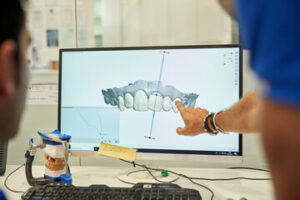Regular inspections are important to keep a deck looking and functioning its best. Look for cracks around fasteners, a dingy appearance or signs of rot.

Clear out debris (leaves, twigs, dirt) from the gaps between boards to prevent mold and mildew. Establish a cleaning schedule and stick to it. Visit https://www.mountjoycompany.com to learn more.
A well-maintained deck can extend the living space of your home and increase its value. But a deck is more exposed to the elements than any room inside your house, which means it needs year-round attention to keep it safe and attractive. Regular cleaning, resealing, and replacing worn boards can extend the life of your deck significantly.
Deck inspections help catch problems before they get worse. A professional inspector knows the nuances of wood species, the appropriate deck loads, and proper construction techniques. They can also evaluate areas of the structure, such as stairs and railings, for safety and security issues.
Examine the Deck Boards
Start with a close-up look at all the deck boards to be sure they are free from discoloration, warping, and damage such as splinters. Look for small holes that might indicate a termite or insect infestation, as well. Make sure all the deck boards are securely fastened, and that there are no loose or rotted ones. If a board feels soft and spongy, or is dark in color, it may be rotted. Use a screwdriver to pry up a small piece of the board and check for splinters. If the wood is rotted, it needs to be replaced.
Next, examine the ledger board, which attaches the deck to your house. This is one of the most common locations for rot. Look for rotting or loose sections of the board, and for flashing that has been installed incorrectly. Properly-installed flashing creates a barrier against moisture and precipitation, but improper installation allows water to seep into cracks and crevices where it shouldn’t be.
Finally, check the connections of all the railings and stairs to be sure they are secure. For example, stair risers and stringers are sometimes attached with nails or screws that can come loose over time. If a nail or screw is loose, strike it with a hammer to be sure the connection is tight. If it isn’t, replace the fastener. Also, check for signs of rust or corrosion on all fasteners and anchors.
Cleaning
Decks require a good cleaning every year or so. This is particularly important for uncovered wood decks, since debris can stain and rot the wooden planks. It is also a good time to inspect the deck for soft or splintered spots and loose nails or deck attachments. Promptly fixing these problems will help prevent them from getting worse and creating a hazard for people walking on the deck.
During the cleaning process, a biodegradable outdoor cleaner that removes mildew should be applied. Follow the manufacturer’s instructions to ensure that the product is applied correctly and that it has adequate time to work. If a power washer is used, it must be operated carefully to avoid damaging the wood. Be sure to point the spray away from people and windows, and to use the lowest pressure that effectively cleans the deck surface.
Aside from standard debris, the wood in a deck is susceptible to fungi like mold and mildew that can quickly become serious problems. Regular cleaning and inspections can keep these fungi under control, but if they do begin to grow, a good power washing may be needed.
Power washing allows for a deep clean that scrubs and rinses the deck to eliminate all traces of fungi. It can also be used to remove dirt and grime that a broom or scrub brush cannot reach. A power washer can be used on the railings as well, but care must be taken to avoid damage. If a power washer is used, the tips should be kept close to the wood to prevent gouging and splintering.
Before you start your cleaning, make sure the deck is clear of toys, furniture and other items that can get in the way during the process. Also, trim any nearby plants that are growing too close to the deck. The thorns and roots of these plants can scratch or splinter the deck planks. Finally, be sure to remove any rugs or mats made of natural materials, as these tend to absorb moisture and promote mildew growth. Instead, opt for plastic or recycled rugs that do not trap water and will resist fungi.
Sealing
Sealing is an essential part of deck maintenance that helps protect the wood from damage and deterioration. It can prevent water from seeping into the wood which can lead to rot and mildew. It also provides a layer of protection against dirt, dust, and other debris that can scratch or mark the surface. Keeping the deck properly sealed will also help maintain its color and luster.
Before applying any type of stain or sealer, be sure that the wood is completely dry. You can test the moisture content with a simple moisture meter. If the wood is wet, you should wait a few days before sealing.
During this time, you should also inspect the deck for repairs. Loose boards, nails that have worked loose, and other defects should be fixed before proceeding to staining or sealing. Cover any plants or furnishings on the deck with plastic sheets before starting to avoid getting stain or sealer on them. It’s also a good idea to protect any surfaces beneath the deck that you don’t want to get stained or sealed, such as grass or concrete.
When it comes to stains, choose oil-based products rather than water-based. These will provide better protection and will last longer. You should always follow the manufacturer’s instructions for application, which may include a primer and multiple coats of stain or sealant.
It’s important to apply the stain evenly for a consistent look. A roller, sprayer, or brush can be used for this. Be sure to work in a well-ventilated area and wear a mask when working with chemicals or cleaners.
After the stain has dried, you should remove any painter’s tape and return any furnishings to their original location. Stain takes 24 hours to dry, so be sure to give yourself a full day before walking on the deck. You can also try to stain the deck on a cloudy or overcast day to prevent direct sunlight from damaging the finish.
Many of the newer deck stain and sealant products contain an anti-microbial ingredient. These aren’t necessary for a basic sealant, which only keeps the water out, but they add an extra layer of protection against mold, mildew, and other microbes.
Repairing
Decks take a beating from the elements, and it’s normal for them to show signs of wear and tear. However, it’s important to note the difference between minor damage and structural problems.
Structural issues are the most serious, and they require a professional’s attention. This includes a thorough inspection of the railings and stairs for safety. If the structure is sound, the homeowner can focus on cosmetic improvements such as misters or built-in benches. Homeowners may also want to consider adding features that increase the functionality of the deck, such as a kitchen or pergola.
Aside from assessing the structure’s integrity, homeowners should look for signs of insect infestation and wood rot. Insects can degrade wooden surfaces, and rot is a common problem with older decks. If left unchecked, rot can spread and ruin the integrity of the entire deck.
To check for rot, walk around the deck and examine the area where it connects to your house. Using a flashlight, you can peer beneath the surface of your deck to see if there’s standing water or any deterioration in the metal flashing. Then, you can use a screwdriver to probe joists and posts for signs of decay. If the wood feels soft or spongy, it needs to be replaced.
Inspect the deck surface for loose boards or splinters, and address them immediately to prevent further damage. Loose fasteners are a safety hazard and can cause injuries if someone falls over them. Protruding nails or screws are another safety hazard that can snag on clothing and hurt bare feet.
Keeping up with routine cleaning and sealing is the best way to protect your deck from moisture and sun damage. By doing so, you can extend the life of your deck and add years of enjoyment to your home. If you don’t have the time to perform these tasks yourself, you can find local carpenters who specialize in deck repairs. They can perform cleaning, staining and sealing services. You can also ask them to make other cosmetic improvements, such as refinishing or building new stairs and railings.








